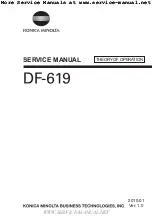
Error handling and diagnostics
CX1500-M510, CX1500-B510
173
Version: 1.0
Test 2
Check that the same baud rate has been set everywhere. For special devices, if the bit timing parameters
are accessible, do they agree with the CANopen definitions (sampling time, SJW, oscillator).
Testing the CAN wiring
Do not carry out these tests when the network is active - communication should not take place during the
tests. The following tests should be carried out in the stated sequence, because some of the tests assume
that the previous test was successful. Not all the tests are generally necessary.
Network terminator and signal leads
The nodes should be switched off or the CAN cable unplugged for this test, because the results of the
measurements can otherwise be distorted by the active CAN transceiver.
Test 3
Determine the resistance between CAN high and CAN low - at each device, if necessary.
If the measured value is greater than 65 Ohms, it indicates the absence of a terminating resistor or a break
in a signal lead. If the measured value is less than 50 Ohms, look for a short circuit between the CAN lines,
more than the correct number of terminating resistors, or faulty transceivers.
Test 4
Check for a short circuit between the CAN ground and the signal leads, or between the screen and signal
leads.
Test 5
Remove the earth connection from the CAN ground and screen. Check for a short circuit between the CAN
ground and screen.
Summary of Contents for CX1500-B310
Page 2: ......
Page 89: ...Product overview CX1500 M510 CX1500 B510 89 Version 1 0 Table 1 Key...
Page 181: ......









































